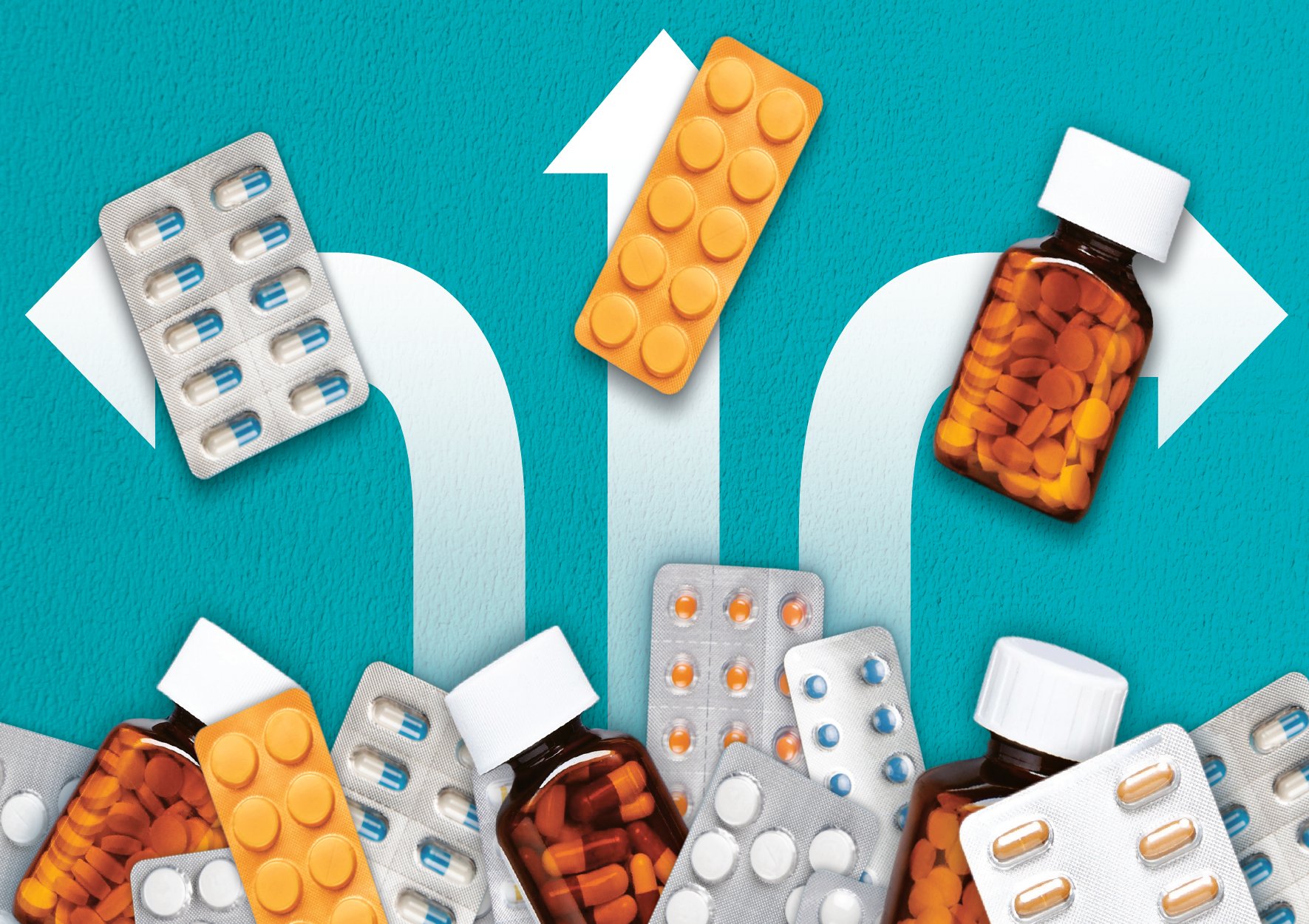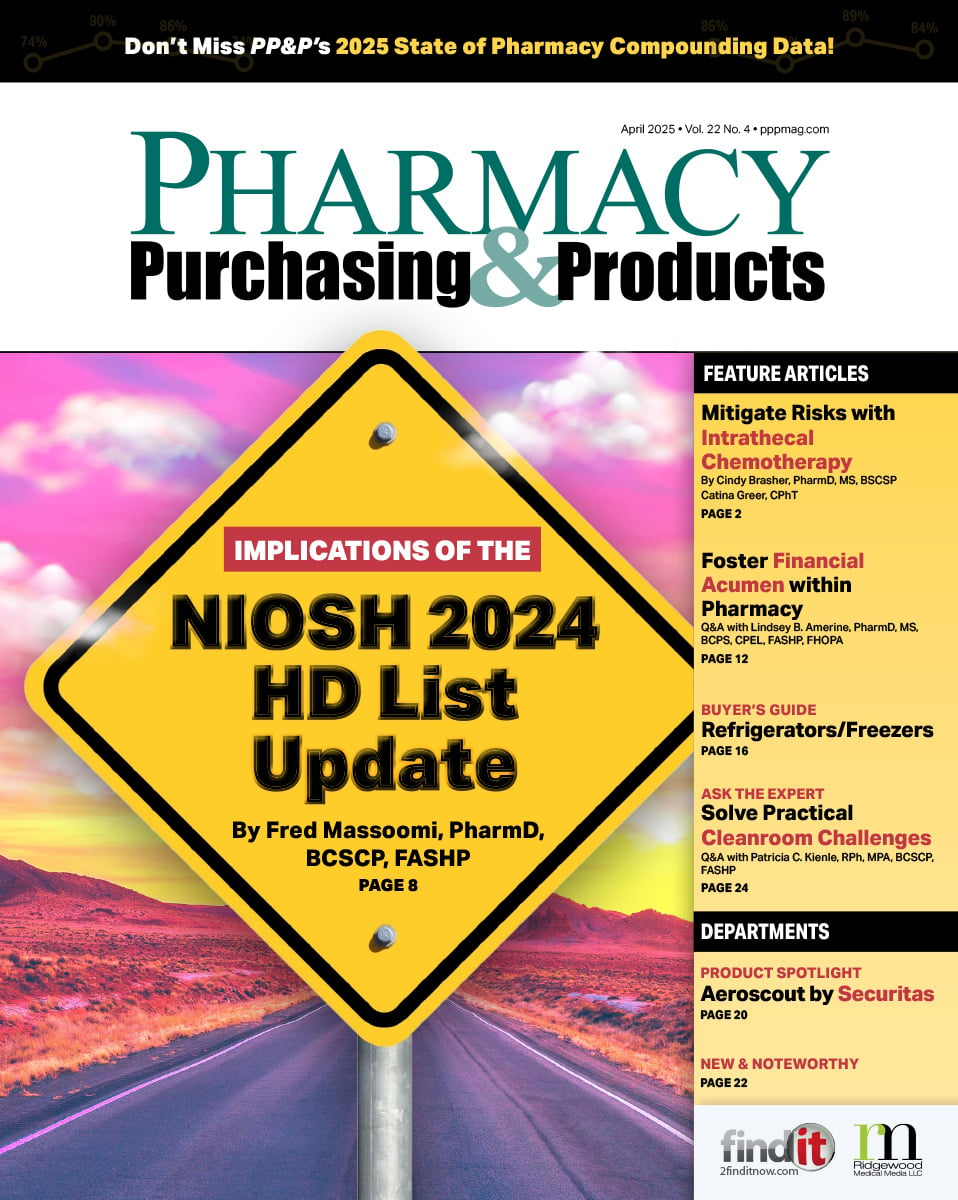- Show Menu
- Contact Us
- FAQs
- Reader Service
- Survey Data
- Survey Winners
- Testimonials
- Upcoming Events
- Webinars
- White Papers
Maximize Robot and Carousel Efficiencies
The Baton Rouge General Medical Center in Louisiana operates two facilities with a total of 509 beds and over 3,000 employees. Each campus has one carousel, and one robot is utilized in the pharmacy servicing cart fill for both campuses. Operating on a centralized medication distribution model has enabled pharmacy to provide nurses with timely delivery of medications at the beginning of each day. The cart fill sources from the robot and carousel, and all medications are bar coded and ready to be administered when delivered. Having the patient’s medications in the nurse’s medication cart with bar code-ready packaging has improved efficiency and increased patient safety. Both facilities are open 24 hours, seven days a week, with 25 technicians and 27 pharmacist FTEs.
Using Carousels to Stock ADCs
Safely and efficiently stocking medications in automated dispensing cabinets (ADCs) is paramount to ensuring that patients receive the right medications in a timely manner. Our ADCs are stocked from and interfaced with the carousel via bar code technology, which also applies to the delivery process, increasing the safety benefits. The delivery technician scans the bar code on the medication from the carousel. Upon arrival at the ADC, the bar code on the medication is scanned and the proper drawer will open. By maintaining an interface between the carousel and the ADCs, inventory can be monitored and adjusted according to real-time use. ADC inventory par levels are set by pharmacy and each cabinet will send a notification directly to the carousel when replenishment is required. In addition, reports can be generated to pull stock for individual cabinets or groups of cabinets. Pulling medications for groups of cabinets permits bulk product to be removed and then divided up to go to areas in need of restocking. Using historical data, inventory par adjustments can be determined to reduce or increase inventory as often as required.
Robotic cart fill is performed at night and delivered in the morning, with the first dose due at 9am. A pharmacist performs a check of 10% of the patient envelopes prepared by the robot to ensure accuracy. In the four years since we began using the robot, we have gone without incident. The robot fills one patient’s medications in one envelope; if the patient requires a large number of medications it will fill additional envelopes. Each envelope is labeled by the robot with the patient’s name and a bar code unique to that patient visit. The pharmacy technician then delivers the envelope and places the medications in the patient’s medication drawer for nursing.
Narcotics and PRN medications also are housed in ADCs. The nurse receives the patient’s routine medications for the day in the medication cart on wheels with a computer and scanner for distribution. The nurse moves the cart into each patient’s room before scanning the patient’s armband and medication to confirm accuracy with the profiled patient medication list. This ensures the right medication, dose, and route are being applied to the right patient at the right time.

Purchasing Cost Savings
To optimize cost savings, our facility purchases bulk, oral solid medications and repackages them in-house for use in the robot. Buying the top moving medications in bulk and packaging them in-house has ensured that medications are always available and can be distributed efficiently to patients while maximizing cost savings. Technicians do not spend time picking medications manually. These time savings, combined with the financial benefits of purchasing at bulk prices, have helped us cut costs from our overall pharmacy expenditure.
Optimizing Inventory Turns
Baton Rouge General’s use of linking technology to integrate our automation also employs reporting features to help optimize inventory. Our automation specialist uses these optimizing reports to review historical usage data and suggest changes in par levels to better reflect actual usage. Faster-moving items are easily determined by the report, while slower-moving items can be more carefully reviewed to determine peaks in use by day and time. The automation specialist also reviews the ADC optimization reports by unit to optimize inventory in each area. Once an ideal operating state has been established for the ADCs, an additional report on carousel activity is used similarly to evaluate and optimize inventory in the carousel as well.
The physical labor of the staff should also be taken into consideration when working with robots and carousels. To reduce the amount of time the carousel spins from one shelf to the next—enabling faster service—the fastest moving items are placed in close proximity to one another. The width of carousel bins can be adjusted, and smaller bins and dividers allow small items to be stored according to relative use and bigger bins or designated spaces are prioritized for larger items. A virtual medication shelf is utilized to control any inventory housed outside of the automation. Optimal turns of inventory per year can be determined with careful report analysis. Of note, seasonal illnesses and surgeries play a part in inventory control, and should be considered when determining how often to optimize inventory.
Our facility also uses a software program to manage and track inventory replenishment. This technology populates a recommended purchase order for the distributor based on the robot, carousel, and narcotic management technology pars. This ensures medications are ordered when needed, reduces over-ordering, and properly tracks controlled substances, helping to monitor for and prevent diversion. Our purchaser is no longer the only one with the necessary knowledge base to order medications, as others can place orders based on parameters that have been set through optimization. Totes of medications from our distributor are delivered with bar codes that match with the restocking procedure for the carousel and narcotic management technology. The tote is scanned and the medications and quantities received display on the screen. The carousel shelves will then move to receive the delivered products in order.

Moving to Charge on Administration
Our previous process—charge on dispense—was laborious for our technicians, who were responsible for crediting any medications that were returned. Due to a recent trend of decreased patient length of stay, it was not uncommon for medications delivered to the floor on cart fill to then be returned due to patient discharge. Changes in the patient’s medication regimen also would lead to a returned medication, which would then need to be credited to the patient’s account in a timely manner. To help remedy this redundancy in workload and improve workflow, we moved from charge on dispense to charge on administration. Medications are now charged when the nurse charts the administration; therefore, any medication returned to pharmacy can go back into inventory without going through the crediting process. This has freed up technician time to help with inventory control and delivery. Returns to the robot also are quite efficient, as the technician simply puts items on a pin (with the bar code facing forward), into the robot rack, and the robot reads each bar code and places them on the appropriate storage pin inside the robot.
Determine Technology Requirements
When deciding which technology to purchase for use in your facility, first consider the model in which you wish to deliver medication. The centralized model was determined to be most efficient for Baton Rouge General as our primary goal was to reduce nurses’ wait time at an ADC for medications during busy periods. Requiring nurses to utilize one ADC on their unit to procure all of their patients’ drugs was time consuming throughout peak hours. The centralized model requires fewer ADCs on the nursing units and more automation in the pharmacy, placing the onus back on pharmacy and simplifying workflow for nursing. However, because delivery of medications from the pharmacy for first doses may require more time to come from the main pharmacy, it is important to set appropriate expectations for the nursing staff.
Increasing Pharmacy Control
The suite of carousel and robot automation in our facility increased pharmacy’s ability to control and manage inventory, in addition to streamlining workflow for nursing. The automation also fostered the use of bar code technology, and along with it the safety benefits of ensuring accurate medication administration. Using this technology has increased our confidence in safe medication delivery, tight inventory control, and reduction in dollars spent per adjusted patient day.
 Debra Jarratt, RPh, is the director of pharmacy at Baton Rouge General Hospital in Baton Rouge, Louisiana. She graduated from the University of Louisiana at Monroe in 1988 and has spent her career working in hospitals in Georgia and Louisiana. Debra is also a Lean Six Sigma Green Belt.
Debra Jarratt, RPh, is the director of pharmacy at Baton Rouge General Hospital in Baton Rouge, Louisiana. She graduated from the University of Louisiana at Monroe in 1988 and has spent her career working in hospitals in Georgia and Louisiana. Debra is also a Lean Six Sigma Green Belt.
Like what you've read? Please log in or create a free account to enjoy more of what www.pppmag.com has to offer.








